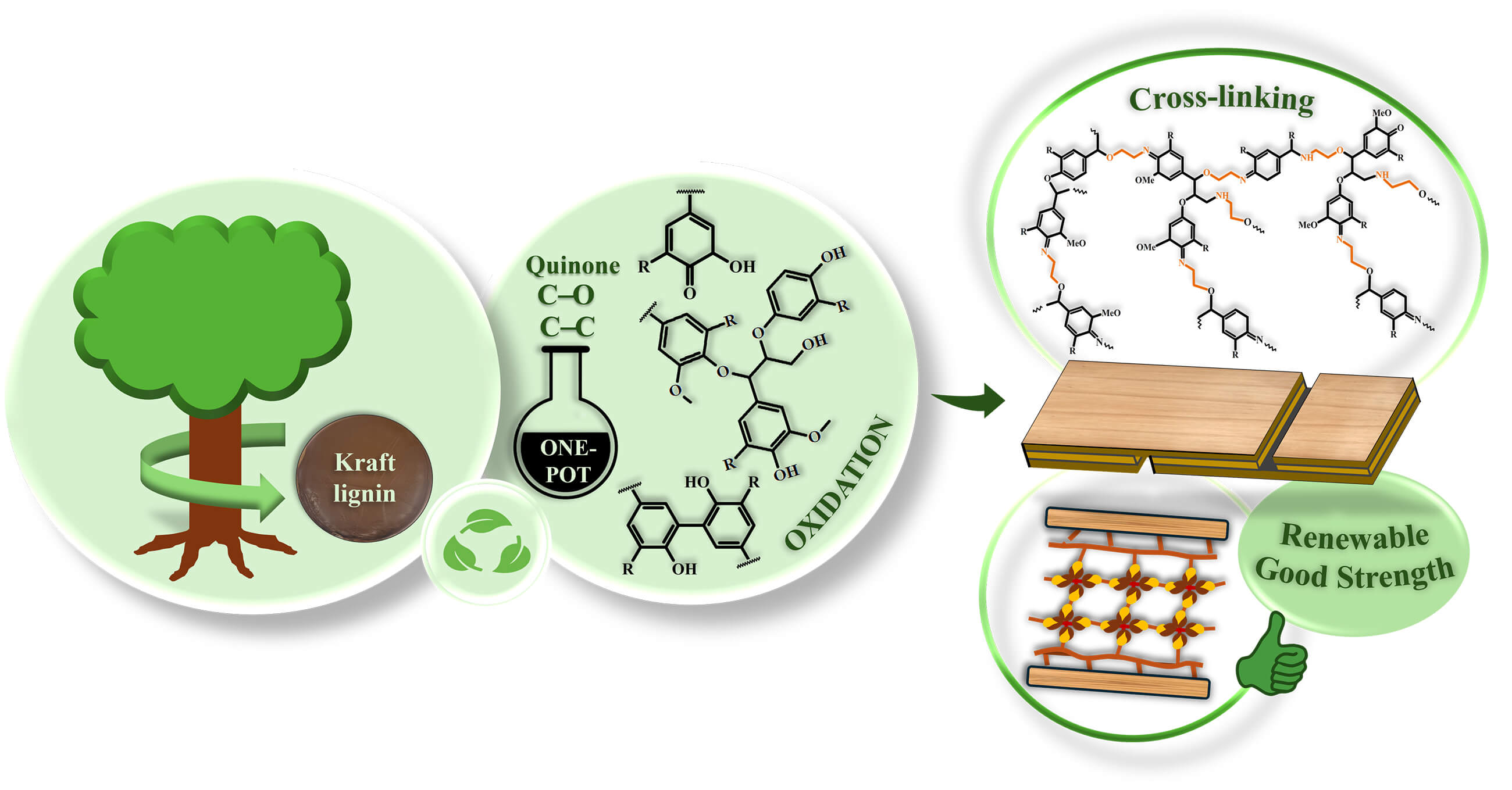 Open Access
Open Access
ARTICLE
Facile Crosslinking of Hardwood Kraft Lignin for Sustainable Bio-Based Wood Adhesives
1 Department of Wood and Paper Science, Kyungpook National University, Daegu, 41566, Republic of Korea
2 Yunnan Province Key Lab of Wood Adhesives and Glued Products, International Joint Research Center for Biomass Materials, Southwest Forestry University, Kunming, 650224, China
* Corresponding Author: Byung-Dae Park. Email:
(This article belongs to the Special Issue: Renewable and Biosourced Adhesives-2023)
Journal of Renewable Materials 2025, 13(5), 829-848. https://doi.org/10.32604/jrm.2025.02024-0056
Received 10 December 2024; Accepted 07 February 2025; Issue published 20 May 2025
Abstract
As the most abundant aromatic bio-based polymer, lignin has great potential as a sustainable feedstock for building crosslinked thermoset polymers as bio-based adhesives. However, the potential of hardwood kraft lignin (HKL) is limited due to its poor crosslinking reactivity. Hence, for the first time, the present study reports the facile oxidation of HKL involving a redox reaction with silver-ammonia complexes ([(AgNH3)2]+), primarily focusing on oxidation to produce reactive quinones and promote C–C linkages during reaction. This study aims to increases reactivity of oxidized HKL for effective crosslinking with monoethanolamine (MEA) for the development of bio-based wood adhesives. The characterization, including 13C-nuclear magnetic resonance (NMR) and Fourier transform infrared (FT-IR) spectroscopy, confirms the oxidation reaction, such as the formation of quinones (C=O) and subsequent crosslinking between the oxidized HKL molecules and MEA. Additionally, gel permeation chromatography (GPC) confirms the C–C and C–O linkages with increased molecular weight after oxidation, and is supported by differential scanning calorimetry (DSC) which shows the exothermic reaction due to the crosslinking of the oxidized HKL molecules via condensation to form C–C and C–O linkages. The crosslinked HKL/MEA-based adhesives underwent mild reaction and achieved a maximum dry shear strength of 0.77 MPa, which exceeds the standard requirement of 0.6 MPa. These findings demonstrate not only a one-pot oxidation for improving the reactivity of HKL using silver complexes, but also its facile crosslinking with MEA for sustainable bio-based wood adhesives.Graphic Abstract

Keywords
Cite This Article
 Copyright © 2025 The Author(s). Published by Tech Science Press.
Copyright © 2025 The Author(s). Published by Tech Science Press.This work is licensed under a Creative Commons Attribution 4.0 International License , which permits unrestricted use, distribution, and reproduction in any medium, provided the original work is properly cited.


 Submit a Paper
Submit a Paper Propose a Special lssue
Propose a Special lssue View Full Text
View Full Text Download PDF
Download PDF Downloads
Downloads
 Citation Tools
Citation Tools